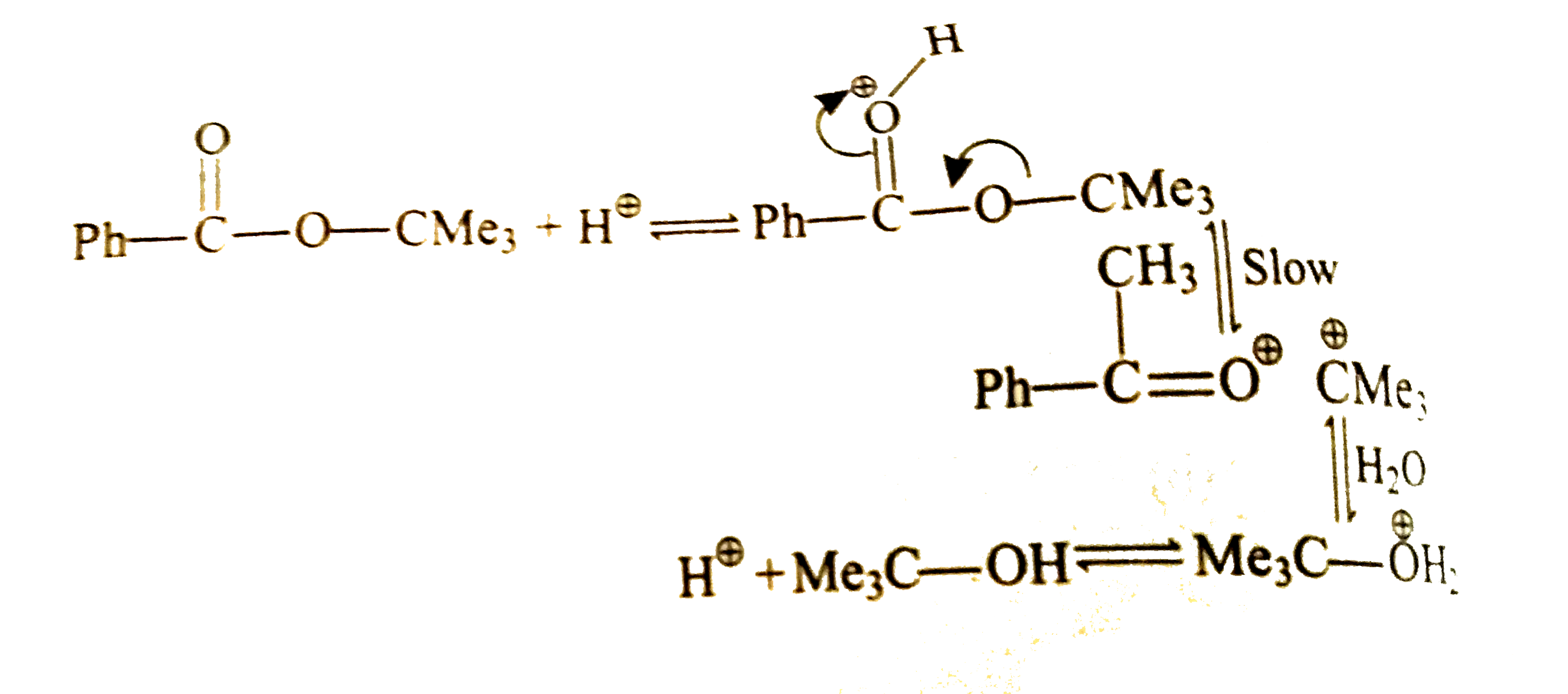CH3−O∣∣C−CH2−CH3+CH3MgBr→XH3O+−−−→YH2SO4−−−→170∘CZ.
What is Z ?
CH3−OH| C | CH3−CH2−CH3
CH3−C | CH3=CH−CH3
CH3−C2H5| C | CH3−O−C2H5| C | CH3−CH3
CH2=C | CH3−CH2−CH3
The correct Answer is:B
To solve the given reaction sequence, we will break it down step by step, identifying the products at each stage.
Step 1: Formation of X
We start with the compound:
CH3C(=O)CH2CH3+CH3MgBr
This is a reaction between an aldehyde (or ketone) and a Grignard reagent (CH₃MgBr). The Grignard reagent acts as a nucleophile and attacks the electrophilic carbon of the carbonyl group.
- Mechanism: The nucleophilic CH₃⁻ from the Grignard reagent attacks the carbonyl carbon (C=O), leading to the formation of an alkoxide intermediate.
The reaction can be represented as:
CH3C(=O)CH2CH3+CH3MgBr→CH3C(OH)(CH2CH3)CH3MgBr
This intermediate is denoted as X:
X=CH3C(OH)(CH2CH3)CH3MgBr
Step 2: Formation of Y
Next, we treat X with dilute acid (H₃O⁺) to protonate the alkoxide and convert it into an alcohol.
- Reaction:
CH3C(OH)(CH2CH3)CH3MgBr+H3O+→CH3C(OH)(CH2CH3)CH3+MgBr+
This gives us the alcohol Y:
Y=CH3C(OH)(CH2CH3)CH3
Step 3: Formation of Z
Now, we treat Y with concentrated sulfuric acid (H₂SO₄) at 170°C. This will lead to dehydration, where water is eliminated to form an alkene.
- Mechanism: The alcohol undergoes dehydration to form a carbocation, which can then rearrange or eliminate to form the double bond.
The reaction can be represented as:
CH3C(OH)(CH2CH3)H2SO4,170°C−−−−−−−−→CH3C+(CH2CH3)+H2O
From the carbocation, two possible alkenes can form:
1. CH3C(CH2)CH2 (1-butene)
2. CH3C(CH3)CH (2-butene)
The more stable alkene will be the one with more alkyl substituents (more alpha hydrogens), which is 2-butene.
Thus, the final product Z is:
Z=CH3C(CH3)=CH2 (2-butene)
Final Answer:
Z is 2-butene.
---
We start with the compound:
CH3C(=O)CH2CH3+CH3MgBr
CH3C(=O)CH2CH3+CH3MgBr→CH3C(OH)(CH2CH3)CH3MgBr
X=CH3C(OH)(CH2CH3)CH3MgBr
Next, we treat X with dilute acid (H₃O⁺) to protonate the alkoxide and convert it into an alcohol.
CH3C(OH)(CH2CH3)CH3MgBr+H3O+→CH3C(OH)(CH2CH3)CH3+MgBr+
Y=CH3C(OH)(CH2CH3)CH3
Now, we treat Y with concentrated sulfuric acid (H₂SO₄) at 170°C. This will lead to dehydration, where water is eliminated to form an alkene.
CH3C(OH)(CH2CH3)H2SO4,170°C−−−−−−−−→CH3C+(CH2CH3)+H2O
1. CH3C(CH2)CH2 (1-butene)
2. CH3C(CH3)CH (2-butene)
Z=CH3C(CH3)=CH2 (2-butene)
Z is 2-butene.
Topper's Solved these Questions
- BOOK - DISHA PUBLICATIONCHAPTER - ALDEHYDES, KETONES AND CARBOXYLIC ACIDSEXERCISE - Exercise - 1 : Concept Builder (Topicwise) (TOPIC 3 : Preparation and Properties of Carboxylic Acids)21videos
ALDEHYDES, KETONES AND CARBOXYLIC ACIDS
- BOOK - DISHA PUBLICATIONCHAPTER - ALCOHOLS, PHENOLS AND ETHERSEXERCISE - Exercise - 2 : Concept Applicator)28videos
ALCOHOLS, PHENOLS AND ETHERS
- BOOK - DISHA PUBLICATIONCHAPTER - AMINESEXERCISE - Exercise - 2 : Concept Applicator30videos
AMINES
Similar Questions
Knowledge Check
- Question 1 - Select One
CH3CH∣CH3−CH=CH2(i)B2H4−−−−−−−−−→(ii)H2O2/OHXH2SO4−−−→140∘Y
What is Y ?ACH3−CH| CH3−CH2−CH2−O−CH2−CH2−CH| CH3−CH3BCH3−CH| CH3−CH=CH2CCH3−CH| CH3−CH| CH3−O−CH| CH3−CH3DCH3−CH3| C | C2H5−O−CH3| C | C2H5−CH3 - Question 2 - Select One
CH3−O∣∣C−CH3CH2N2−−−→(X)SeO2−−→(Y)(major)m−CPBA−−−−−−→(Z) Product (Z) is :
ACH3−O∣∣C−O−CH3BCH3−O∣∣C−O−O∣∣C−CH3CCH3−CH2−O∣∣C−O−CH3DCH3−C∣∣O−C∣∣O−O−CH3 - Question 3 - Select One
CH3−O||C−CH2CH2N2−−−→(X)CF3CO3H−−−−−→ Major Product (Y) is
ACH3−O||C−O−CH3BCH3−O||C−O−CH2−CH3CCH−3CH−2O||C−O−CH3DCH3−CH2−CH2−O−CH3
Identify Z CH3COONH4Δ−−→XP2O5−−→YH2O/H+−−−−−→Z
View SolutionIn the given reaction
CH2−cH2−O∣∣C−CH2COOC2H5[X]−−→(A)(i)LiAlH4−−−−−−−−→(ii)H2O/H⊕CH3−CH2−O∣∣C−CH2−CH2OH+C2H5OH
[X] will beView SolutionGiven that
CH3MgBrO2−−→XCH3MgBr−−−−−→YH3O+−−−→Z The compound Z isView Solution
CH3−O||C−OCMe3H218O−−−→H2SO4 Products:View SolutionCH3−CH2CH3∣CHCH=CHCH3H3O+−−−→
Major product of the reactionView Solution

